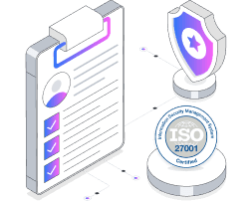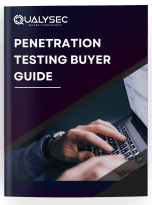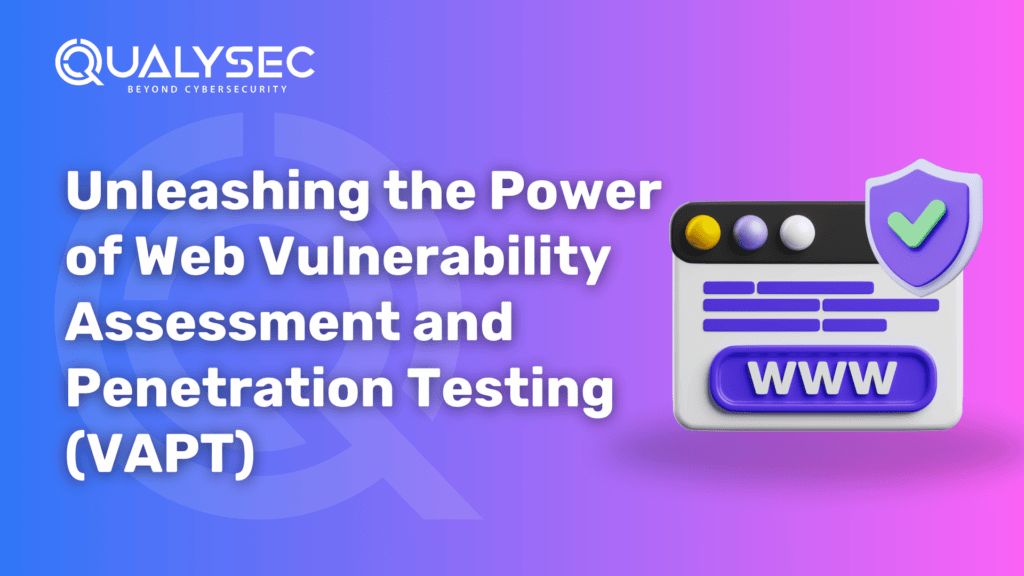Unleashing the Power of Web Vulnerability Assessment and Penetration Testing (VAPT)
The impending threat of cyberattacks has never been more prominent in an era driven by digital reliance. This blog seeks to untangle the convoluted web of cybersecurity by diving into the practical benefits of Web Vulnerability Assessment and Penetration Testing services, eventually advocating for proactive security measures that go beyond the conventional. In essence, cybersecurity is a proactive strategy for identifying and mitigating possible risks. Vulnerability Assessment provides the framework for identifying system flaws, but Penetration Testing goes a step further by simulating real-world cyberattacks. Businesses may enhance their defenses against an ever-changing digital threat landscape by thoroughly grasping these fundamentals. Let’s dive into the blog. Decoding Web VAPT: A Definitive Overview Web Vulnerability Assessment and Penetration Testing (VAPT) is a comprehensive security testing method for identifying and mitigating potential vulnerabilities and flaws in web applications, websites, and online systems. It entails a comprehensive analysis of the application’s security posture to identify and address any vulnerabilities before they may be exploited by bad actors. Differences Between Vulnerability Assessment and Penetration Testing Vulnerability Assessment (VA): This step entails a thorough examination of the web application’s code, configuration, and infrastructure to discover any security flaws. VA is similar to a thorough scan that seeks to generate a list of probable flaws. It frequently involves automated tools, although it may also entail hand examination. Penetration Testing (PT): Unlike vulnerability assessment, penetration testing actively exploits reported vulnerabilities to determine their real-world effect and possible hazards. This simulates a bad hacker’s approach, assisting companies in understanding the actual dangers they face. Related: Read more about Penetration Testing The Approaches of Web VAPT: Black Box Testing: It focuses on the behavior of the program on the outside, at the interface level, and hence does not require knowledge of its internal workings. This implies that testers will not be dealing with any code, algorithms, or other technical aspects. They approach the program only from the user’s standpoint, with little regard for what’s going on behind the surface. It’s like viewing software, with only the inputs and outputs running through it. White Box Testing: While black box testing provides testers with a high-level overview of a software system, it provides no insight into its core code structure. This is where white box testing comes into play. This method allows testers to peer inside the white box and examine every component of the software system, from its code and architecture to its interconnections. This enables testers to have a full understanding of how the program performs its duties. Gray Box Testing: Gray box testing is an excellent combination of black box and white box testing. It enables testers to approach a software product from the perspective of a user while still gaining access to its internal code. As a result, with this sort of testing, testers must have some grasp of the system’s core mechanics, although not as much as with white box testing. Furthermore, they test end-to-end features and user scenarios. Navigating the Online Space: The Significance of Online VAPT Testing If you own a business, you understand how important your reputation and assets are. That is why it is critical to take the required precautions to safeguard them from potential cyber security risks such as phishing, ransomware, and other serious cyber assaults. This is where the web app VAPT may help. Here are 5 reasons why businesses should conduct VAPT tests: 1. Meeting Compliance Requirements Several industries have unique compliance standards that must be met to secure sensitive data. Healthcare organizations, for example, must follow HIPAA regulations, whereas banking institutions must follow PCI DSS guidelines. Pen testing may help businesses ensure that they are meeting regulatory guidelines and appropriately securing their data. 2. Identifying Vulnerabilities One of the main reasons for doing a pen test is to find vulnerabilities in a company’s systems and networks. These might include software flaws, incorrectly configured systems, or other vulnerabilities that attackers could exploit. It is critical to identify vulnerabilities before they are exploited to keep an organization’s data and systems safe. 3. Identifying Insider Threats Pen testing can also be used to identify insider threats. These hazards are posed by employees or contractors who have access to sensitive data and systems. By conducting a pen test, organizations may identify possible vulnerabilities that could be exploited by insiders and act to mitigate these risks. 4. Protecting Critical Business Assets One of the primary reasons businesses want VAPT is to safeguard critical assets. By conducting frequent VAPT audits, businesses may identify security faults and vulnerabilities that could jeopardize their assets, such as intellectual property, financial data, and customer data. 5. Protection Against Cyber Threats Businesses are often concerned about cyber dangers, and VAPT may help to provide safety. VAPT audits can assist in identifying vulnerabilities that hackers may use to gain unauthorized access to critical corporate data. Furthermore, businesses can drastically minimize their exposure to attacks by correcting these weaknesses. Online VAPT Test: A Shield for Your Digital Fortress As technology evolves, so do cyber enemies’ strategies. Modern cyber-attacks are sophisticated, focused, and possibly destructive, and are no longer limited to basement hackers. The necessity for a proactive cybersecurity approach is clearer than ever, with ransomware attacks holding organizations hostage and stealthy data breaches. VAPT is on the front lines, reacting to the changing threat landscape and keeping your company one step ahead of possible attackers. The cat-and-mouse game between cybersecurity measures and cyber-attacks continues to escalate in this era of digital growth. Cyber attackers are not just skilled at exploiting technological flaws, but they are also becoming increasingly competent at influencing human aspects through social engineering. The presence of nation-state actors and organized cybercrime syndicates in the environment has increased the importance of effective cybersecurity measures. VAPT serves not only as a defense against known threats but also as a strategic compass, assisting firms in anticipating and fortifying themselves against the unexpected and ever-changing tactics of cyber attackers. It is not only about defense; it is also about remaining adaptable




